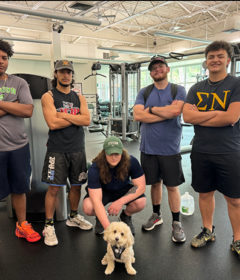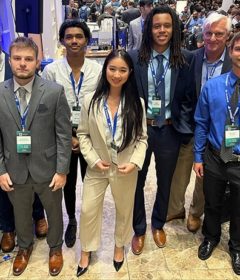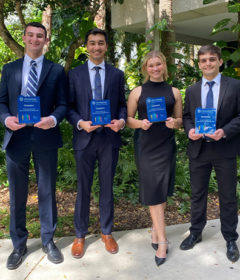The Climb: Copeland sets incredible goal
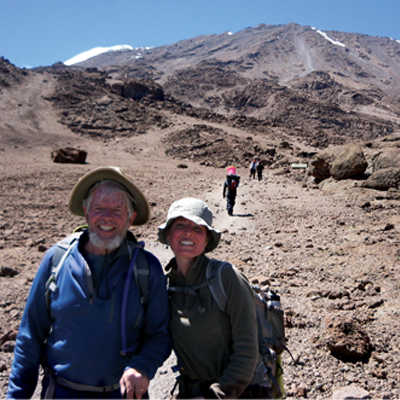
Enduring subzero temperatures, rain and heavy winds, relentless fatigue and decreasing oxygen levels, Business Professor Rick Copeland and his daughter reached the summit of Mount Kilimanjaro as dawn broke on New Year’s morning.
“The sunrise was gorgeous. You could see the roof of Africa and the curvature of the Earth,” recalled Copeland. “I was so tired, but relieved and euphoric.”
“To watch that sun come up on a new year and realize what I had done, I realized I could do anything,” said Copeland’s daughter, Dr. Beth Ann Sastre, a 1996 Stetson alumna who is now a general internist and professor at Vanderbilt University Medical Center in Nashville, Tenn.
A year before their amazing journey, Copeland, 64, thought it was too late to fulfill his lifelong dream of climbing Kilimanjaro. He’d had three knee operations and a heart stent procedure. For Christmas 2010, his daughter gave him a book about a man who climbed the famed mountain at age 70. He read it cover to cover that day. Shortly after, he said to his daughter, “We’re going.”
Copeland started training Feb. 1, 2010, after getting the all-clear from his doctors. He jogged the stairs of the six-story Lynn Business Center 28 times, up and down, several times a week – the equivalent of 140 flights of stairs or nearly double the Empire State Building. And he climbed a mountain near his second home in southwest Virginia. Sastre also got into great physical shape – stair-climbing, strength-training and biking.
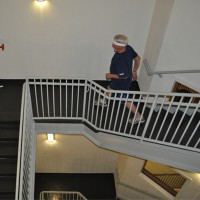
The pair had hiked a section of the Appalachian Trail together every summer, and both had climbed smaller mountains. They called on every bit of that training and experience for their ascent and descent of the 19,000-plus-foot Kilimanjaro.
“You can do more than you think you can,” Copeland said, “but in anything you do in life you’ve got to decide if you’re committed.”
Traveling with a group of nine other climbers and six guides, they embarked Dec. 27.
“For the first three days, it rained on us steadily,” said Copeland, the oldest in the group by 24 years. “The higher we climbed, it got colder and harder as you experienced the lack of oxygen. Then, there was the relentless wind and fatigue — it was the hardest thing I’ve ever done in my life.”
“And I hope it will always be the hardest thing I ever have to do,” added Sastre, 37, who majored in Biology and Spanish as a Stetson undergraduate. Most in the group were dizzy and nauseated, and some were vomiting from altitude sickness as they climbed the final six-hour leg. “Every step was a mental decision,” Sastre said. She and her dad stuck together for the last 20 feet. When they reached the top, “it was spectacular,” she said. “To be able to watch him accomplish this lifelong dream – it was just really inspiring.”
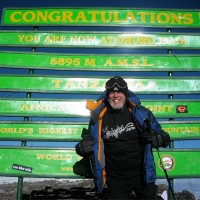
There were many other payoffs for the hard climb, as well. Copeland continued beyond the first summit to the highest summit, named Uhuru Peak. He was inspired to press on for Stetson student Jared Penney, who has been paralyzed since 2010 due to transverse myelitis (a spinal cord injury) and is still recovering, but is back in school this semester. A photo was snapped of Copeland wearing a T-shirt with Penney’s name at Uhuru.
Also on the climb up, the group walked past lava fields and massive boulders where Kili had once blown its top – which Copeland likened to walking on the face of the moon. And on New Year’s Eve in the dark, he was awestruck by the view. “All the stars in the sky were knockout explosive bright. And then from one end of the horizon to the other, you saw the Milky Way. There were thousands of stars,” he said. “It was just unbelievable.”
God was with him every step of the journey, Copeland said. “I spent a lot of that last day in prayer. I believe I got part way up the mountain, but God got me all the way up the mountain.” Now back to campus following sabbatical in the fall and then the trip, Copeland said he has many lessons to pass along to his students and colleagues. An attorney and professor, he’s in his 36th year teaching business law and tax at Stetson University.
“You can do more than you think you can,” Copeland said. “But in anything you do in life you’ve got to decide if you’re committed. If I had not done every bit of preparation I did – every bit – I would not have made it to the top… When you set a goal, and you believe in it, and you put your heart and soul into it and you accomplish it – or do as much as you could – nobody can take that away from you.”
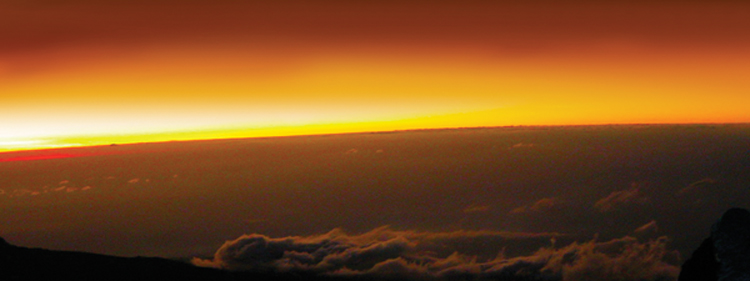
Penney, the student who inspired Copeland’s push to make it to the highest summit of Kilimanjaro, was “caught completely off-guard” when he received a letter and matching T-shirt from his former professor at Christmas. Adjusting to paralysis has been a daily struggle, Penney said, but he’s happy to be back at school in pursuit of his own professional and personal goals and is looking forward to seeing his former professor in the Lynn Business Center. “It’s very cool,” he said of Copeland’s climb. “I guess I inspired him some, and he in turn reciprocated that with his success.”
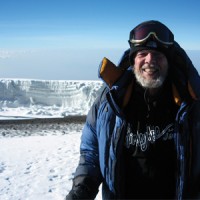
Another Copeland student, senior Matt Gold, was excited to hear his professor’s story in class at the start of the semester. “The training was mind-blowing,” said Gold, a Business Management major and Business Law minor from Boca Raton. “I’m young, and I can’t imagine it. He said he was 64 years old and that the next oldest climber was 40. I think that’s amazing. It also teaches us a lesson. When he commits to something, he goes at it 110 percent. My grandfather is 89 and still works. It’s great to know there are certain people who won’t allow anything to get in the way and slow them down.”
By Cindi Brownfield, Stetson University Marketing

